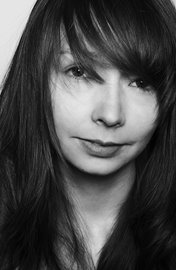Long-Term Projects - 2nd Prize
Reborn
Karolina Jonderko
11 July, 2015
Katarzyna, from Sianożęty, in Poland, ‘adopted’ a reborn doll after a miscarriage. She and her four children treat it as part of the family.
‘Reborn’ babies first appeared in the 1990s. Each is unique, carefully crafted by artists known as ‘reborners’. The hyper-realistic reborn babies are created with such details as birthmarks, veins, implanted hair, pores, tears, and saliva. More sophisticated reborns are equipped with electronic systems capable of reproducing the heartbeat, breathing, and sucking of a real baby. Most of the dolls are made of vinyl, though the more realistic ones are made from silicone. Human hair is used for eyelashes, and completed dolls are sometimes perfumed with a ‘new baby’ smell. Reborn babies are available whole and in kit form, and can be purchased online and at fairs. The process of buying a reborn can be done in such a way as to simulate adoption: dolls come with ‘adoption’ or ‘birth’ certificates. Reborn babies have been used in pediatric training to teach students practical childcare skills, and the use of the dolls in care homes has been shown to help reduce disruptive behaviour in people with dementia. While most reborn owners are doll collectors, others have experienced miscarriage, neonatal deaths, have no means for adoption, or suffer from empty nest syndrome, and may use the doll as a substitute for a child.
The photographer wished to explore the phenomenon of how artificial babies evoke genuine emotional response in adults. Each woman portrayed in this project has a personal motivation for having a reborn baby. Some who cannot have, or who have lost, a baby, give their love to an artificial one, looking after them, changing them, and buying them clothes. For some, the dolls are a means of dealing with loss or anxiety; for others they provide companionship.

Karolina Jonderko
Karolina Jonderko (1985) is an Polish photographer based in her home country, where she works on a variety of projects both locally and internationally. Most of her long-term ...
Through our education programs, the World Press Photo Foundation encourages diverse accounts of the world that present stories with different perspectives.
Our exhibitions showcase stories that make people stop, feel, think and act to a worldwide audience.
Our annual contest recognizes and rewards the best in photojournalism and documentary photography.
